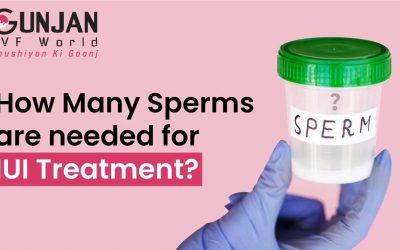Do you know the success rate of pregnancy with the IUI procedures ranges from 15% to 20% per cycle? Yes, this is true. IUI, which is Intrauterine insemination, is a kind of artificial insemination that helps in treating infertility issues. This a quick process in which the pre-selected sperm is directly injected into your uterus or womb.
IUI is not recommended to patients who have a blockage in the fallopian tubes. And also this process is not fit for women suffering from severe endometriosis. When Undergoing this procedure, certain medications are prescribed to stimulate the production of eggs in the ovaries. Further, it is followed by, a simple technique of injecting the pre-washed sperm directly into the uterus during ovulation. The entire procedure is divided into a few steps. The steps are mentioned below with a proper guide.
IUI procedure steps
The commonly used fertility treatment – But how exactly does the process work? The IUI procedure Is 7 Key Steps To Success Towards Having Children
- Suggestions from IUI specialist
You must opt for a suggestion from an IUI specialist before proceeding with the procedure. The doctor will provide proper knowledge about the procedure and will also give you the advice to consume medicines to take care of your maternal health. You will also be suggested to plan your diet accordingly and avoid drinking and smoking. This will help to have a great journey to a successful pregnancy.
Certain tests will also be conducted to determine the problem of natural pregnancy. The test results will help to determine whether the IUI procedure will work.
- Egg growth stimulation
Injectable medications or oral medications are used for the stimulation of ovaries for the growth and maturation of eggs. Doctors prescribe these injections to be taken in the parts of the body where there will be fat, for example, top of the thigh or stomach or intramuscular on buttocks. Oral medication is prescribed for five days and injections are prescribed for three to twelve days. This is based on the response of the ovaries.
Book An Appointment
Follow Us On
FURTHER READING
- Blood monitoring and ultrasound
When undergoing injectable medications, doctors recommend ultrasound every 2-3 days. It helps to monitor the egg development and the ovaries. Sometimes Blood tests are also recommended to determine the levels of hormones that are related to ovarian function and egg growth.
These tests and monitoring help to know that everything is proceeding safely. When egg size is generally more than 20 mm and uterus lining (endometrium) is good a trigger shot is planned.
- Inducing ovulation
A trigger shot is received by patients once the egg is ripened. Within 36 hours, it causes ovulation. A nurse gives the shot at a clinic or sometimes it is self-administered. Sample sperm is processed. The sperm sample is provided by the male partner or by the donor. The sample is washed during the preparation so that immobile sperms debris is removed. Washing also helps to remove the substances that are responsible for causing cramps. The good sperm are concentrated further.
- Insemination
A woman lies on the table just like a routine exam of the pelvis. The sample of the sperm is injected directly into the uterus with the help of a long, thin, flexible catheter. The procedure does not cause any pain and also does not take much time.
Getting up from the table does not cause any change in the chances of pregnancy. Sometimes the process of insemination is recommended in two consecutive days in a row. But most of the time single insemination is also beneficial.
- Follow-up
Ovulation and progesterone levels are tested after one week. Additional support of hormones is also supported in the case of some patients. The lining in the uterus is prepared by these hormones for pregnancy. This support is also useful for women who have multiple miscarriages.
- Pregnancy test
This is the last step of the procedure. It is conducted generally 14 days after directly inseminating into the uterus. This test finally helps to see whether the treatment turned to be successful or not. This test is carried at least two weeks after the procedure is conducted. In case the result is not positive one may contact the doctor and start the procedure once again.
Share this with
Related Blogs
How Many Sperm are needed for IUI?
Infertility is a serious problem not only in India but across the world as well. That is why it is really important to go for some alternative procedures of reproduction.
What is the Success Rate of IUI?
Infertility is a serious problem not only in India but across the world as well. That is why it is really important to go for some alternative procedures of reproduction.
Follow Us On
About Author





